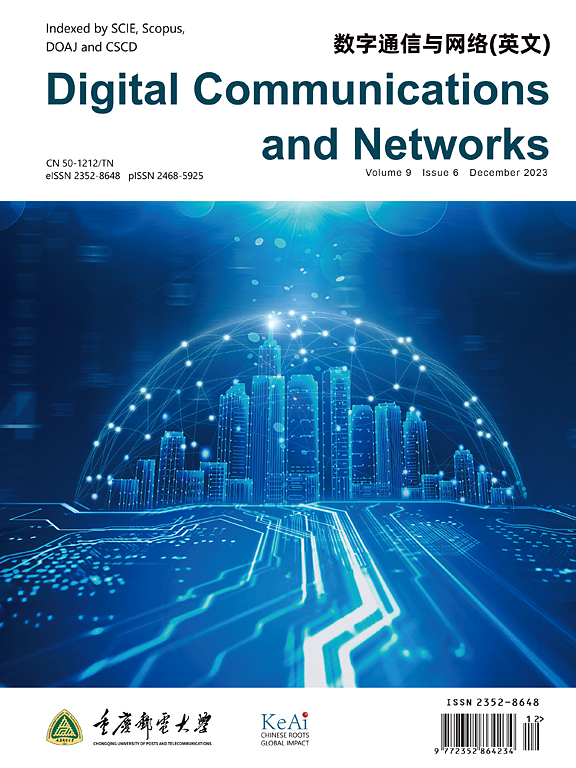UAV-assisted MEC offloading strategy with peak AOI boundary optimization: A method based on DDQN
IF 7.5
2区 计算机科学
Q1 TELECOMMUNICATIONS
引用次数: 0
Abstract
In response to the requirements for large-scale device access and ultra-reliable and low-latency communication in the power internet of things, unmanned aerial vehicle-assisted multi-access edge computing can be used to realize flexible access to power services and update large amounts of information in a timely manner. By considering factors such as machine communication traffic, MAC competition access, and information freshness, this paper develops a cross-layer computing framework in which the peak Age of Information (AoI) provides a statistical delay boundary in the finite blocklength regime. We also propose a deep machine learning-based multi-access edge computing offloading algorithm. First, a traffic arrival model is established in which the time interval follows the Beta distribution, and then a business service model is proposed based on the carrier sense multiple access with collision avoidance algorithm. The peak AoI boundary performance of multiple access is evaluated according to stochastic network calculus theory. Finally, an unmanned aerial vehicle-assisted multi-level offloading model with cache is designed, in which the peak AoI violation probability and energy consumption provide the optimization goals. The optimal offloading strategy is obtained using deep reinforcement learning. Compared with baseline schemes based on non-cooperative game theory with stochastic learning automata and random edge unloading, the proposed algorithm improves the overall performance by approximately 3.52 % and 20.73 %, respectively, and provides superior deterministic offloading performance by using the peak AoI boundary.
采用峰值 AOI 边界优化的无人机辅助 MEC 卸载策略:基于 DDQN 的方法
本文章由计算机程序翻译,如有差异,请以英文原文为准。
求助全文
约1分钟内获得全文
求助全文
来源期刊

Digital Communications and Networks
Computer Science-Hardware and Architecture
CiteScore
12.80
自引率
5.10%
发文量
915
审稿时长
30 weeks
期刊介绍:
Digital Communications and Networks is a prestigious journal that emphasizes on communication systems and networks. We publish only top-notch original articles and authoritative reviews, which undergo rigorous peer-review. We are proud to announce that all our articles are fully Open Access and can be accessed on ScienceDirect. Our journal is recognized and indexed by eminent databases such as the Science Citation Index Expanded (SCIE) and Scopus.
In addition to regular articles, we may also consider exceptional conference papers that have been significantly expanded. Furthermore, we periodically release special issues that focus on specific aspects of the field.
In conclusion, Digital Communications and Networks is a leading journal that guarantees exceptional quality and accessibility for researchers and scholars in the field of communication systems and networks.
 求助内容:
求助内容: 应助结果提醒方式:
应助结果提醒方式:


